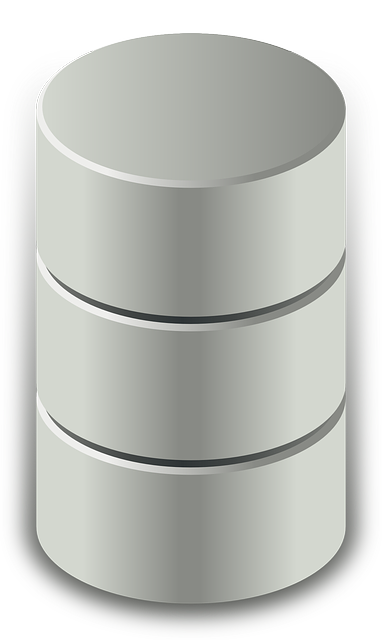Schemas, particularly Organization JSON-LD, are powerful tools for businesses to organize and structure data, enhancing online visibility and brand comprehension. By presenting critical information in a machine-readable format, schemas improve knowledge panels and search engine indexing, driving user engagement. Implementing the right schema standard like Schema.org ensures tailored properties for various industries, while structured data markups enrich online displays with dynamic updates. Measuring success involves tracking key performance indicators and customer feedback to optimize continuously, keeping up with search algorithms and user preferences.
Implementing schema, or structured data markup, is a powerful strategy for businesses aiming to enhance brand understanding and optimize knowledge panel displays. This article delves into the significance of schemas as the foundation for organizing data, detailing benefits like improved search rankings and enhanced user experiences. We’ll explore key components, schema standards tailored to industries, integration with knowledge panels, and methods to measure success and optimize continuously. Discover how adopting schema can revolutionize your brand’s online presence.
- Understanding Schemas: The Foundation for Structured Data
- Benefits of Implementing Schema for Your Organization
- Key Components of a Business Schema
- Choosing the Right Schema Standard for Your Industry
- Integrating Schema into Your Brand's Knowledge Panel
- Measuring Success and Continuous Optimization
Understanding Schemas: The Foundation for Structured Data

Schemas play a foundational role in organizing and structuring data within businesses, serving as the backbone for creating a unified understanding across various platforms. By using schemas, companies can ensure that critical information about their organization is presented in a consistent and machine-readable format. This, in turn, facilitates better brand comprehension both internally and externally.
For instance, implementing Organization JSON-LD schema enables detailed representation of business entities, including the Contact Info Schema for displaying essential contact details, and the About Us Schema for sharing vital company information. These structured data elements not only enhance knowledge panels but also empower search engines to index and display accurate, up-to-date information about businesses, thereby improving their online visibility and user engagement.
Benefits of Implementing Schema for Your Organization

Implementing schema for your business is a powerful strategy to enhance brand understanding and improve knowledge panel displays across various platforms. By using structured data in the form of Schema, you provide search engines with valuable insights about your organization, products, and services. This, in turn, leads to several key advantages. First and foremost, it boosts your online visibility; search engines can easily understand and interpret information about your business, resulting in better placement in search results, especially for rich snippets.
Additionally, schema enables you to showcase essential details about your company through the Organization JSON-LD format. This includes critical data points like contact information via Contact Info Schema, opening hours, and even user reviews, making it easier for potential customers to find and connect with your business. By providing structured data, you contribute to a more comprehensive and engaging online representation of your brand, fostering better interactions and ultimately driving increased conversions.
Key Components of a Business Schema

Implementing a well-structured schema for your organization is akin to crafting a detailed map, guiding users and search engines alike through your brand’s landscape. It involves a careful selection of key components that represent the essence of your business. A robust schema includes information about the organization’s name, address, telephone number, and operating hours, forming the backbone of what is known as an Organization JSON-LD or About Us Schema.
These fundamental details provide a solid foundation for structured brand data, enabling search engines to understand and display your company’s information in a consistent, organized manner. By incorporating additional elements such as descriptions, logos, and categories, you enrich the panel, making it more engaging and informative for users who visit your website or engage with your online presence.
Choosing the Right Schema Standard for Your Industry

Choosing the right schema standard for your industry is a pivotal step in structuring your brand data and enhancing your knowledge panel display. Different sectors have unique requirements when it comes to describing their operations, products, or services. For instance, an e-commerce business will need a schema that accurately represents product details, pricing, and customer reviews, whereas a healthcare organization might focus on doctor profiles, medical specialties, and patient testimonials.
The most widely adopted schema standard is the Schema.org vocabulary, which offers a comprehensive set of properties to describe various aspects of a business. It includes tags for company history, contact information, brand logo (logo markup), and more. By utilizing Schema.org, you ensure your structured brand data is compatible with numerous search engines, making it easier for potential customers to discover and understand your organization within the context of their searches.
Integrating Schema into Your Brand's Knowledge Panel

Implementing schema, such as Organization JSON-LD, is a powerful strategy to enhance your brand’s knowledge panel display and deepen customer understanding. By structuring data using specific markup like Logo Markup and About Us Schema, search engines can easily interpret and present your organization’s information in a clear, organized manner. This structured data enriches your brand’s online presence, making it more visible and accessible to potential customers.
For instance, integrating schema into your knowledge panel allows search engines to display your company logo alongside relevant details like business description, contact information, and working hours. Additionally, it enables dynamic updates, ensuring that any changes made on your website, such as an updated mission statement or new services offered, are promptly reflected in the knowledge panel. This synchronization between your website data and search engine displays fosters a more accurate and up-to-date representation of your brand.
Measuring Success and Continuous Optimization

Measuring success is a critical step after implementing schema for businesses. By utilizing tools that track data associated with your structured knowledge panel display, such as Google Search Console or analytics software, you can gauge the impact on user engagement and brand understanding. Look for increases in click-through rates, average session duration, and bounce rates as indicators of positive changes. Additionally, monitoring conversions and customer feedback can offer valuable insights into how effectively your schema is communicating key information about your organization.
Continuous optimization is essential to keep up with evolving search algorithms and user preferences. Regularly review your schema markup to ensure accuracy and completeness. Incorporate feedback from stakeholders and customers to refine your Contact Info Schema and Organization JSON-LD. Staying agile and adaptive will help maintain a competitive edge, ensuring that your brand remains top of mind for relevant searches and provides a seamless user experience across all platforms.
